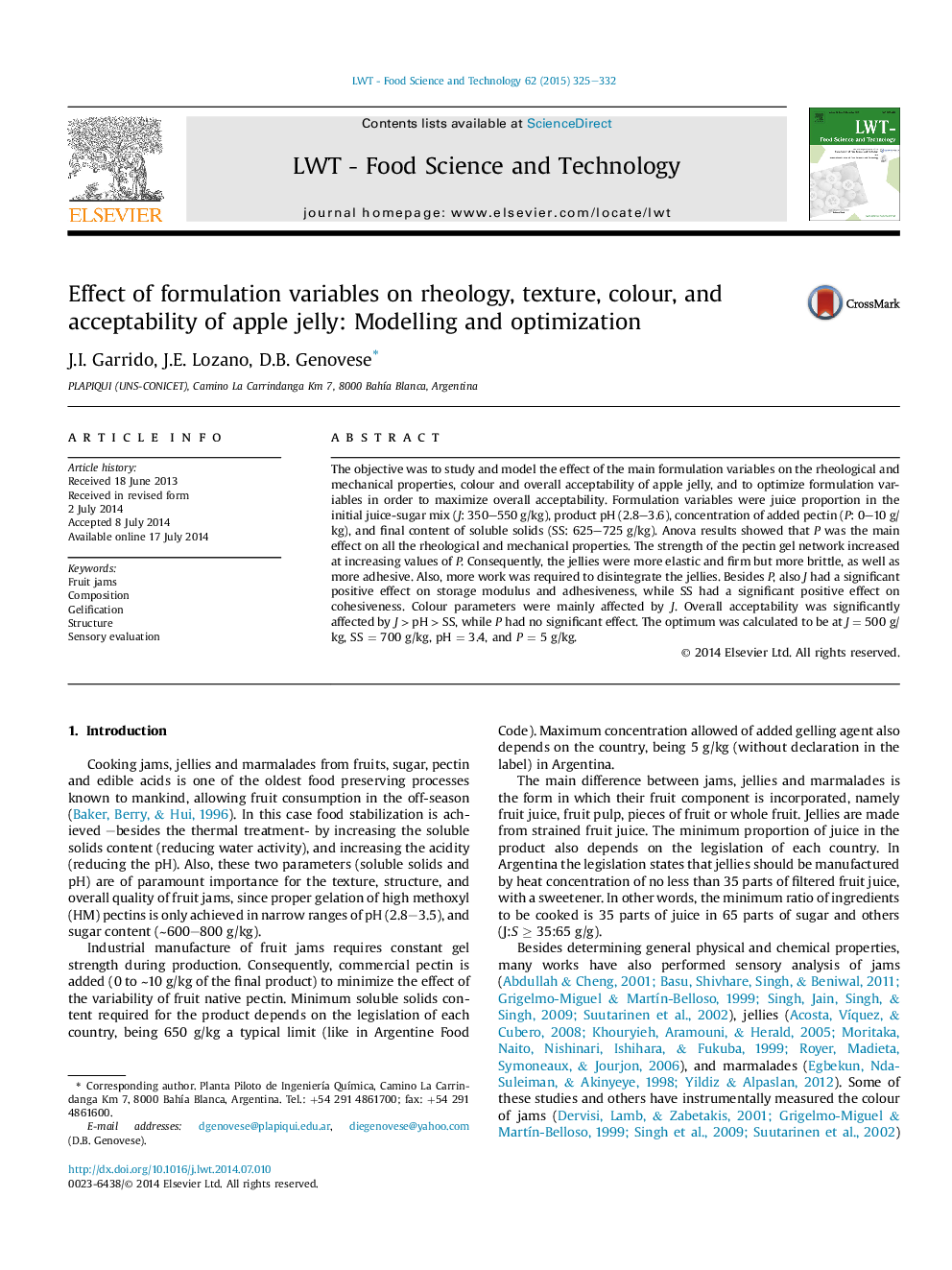| Article ID | Journal | Published Year | Pages | File Type |
|---|---|---|---|---|
| 6401350 | LWT - Food Science and Technology | 2015 | 8 Pages |
â¢Properties of apple jelly were modelled in terms of the formulation variables.â¢Rheology and texture were mainly affected by pectin concentration.â¢Colour parameters were mainly affected by initial juice proportion.â¢Acceptability was affected by juice proportion, pH, and final soluble solids.â¢Optimum formulation was obtained by maximizing overall acceptability.
The objective was to study and model the effect of the main formulation variables on the rheological and mechanical properties, colour and overall acceptability of apple jelly, and to optimize formulation variables in order to maximize overall acceptability. Formulation variables were juice proportion in the initial juice-sugar mix (J: 350-550Â g/kg), product pH (2.8-3.6), concentration of added pectin (P: 0-10Â g/kg), and final content of soluble solids (SS: 625-725Â g/kg). Anova results showed that P was the main effect on all the rheological and mechanical properties. The strength of the pectin gel network increased at increasing values of P. Consequently, the jellies were more elastic and firm but more brittle, as well as more adhesive. Also, more work was required to disintegrate the jellies. Besides P, also J had a significant positive effect on storage modulus and adhesiveness, while SS had a significant positive effect on cohesiveness. Colour parameters were mainly affected by J. Overall acceptability was significantly affected by JÂ >Â pHÂ >Â SS, while P had no significant effect. The optimum was calculated to be at JÂ =Â 500Â g/kg, SSÂ =Â 700Â g/kg, pHÂ =Â 3.4, and PÂ =Â 5Â g/kg.
